
views
X
Research source
Many people who have a V-shaped gait do not experience any pain or other issues as a result, but some people do. If your v-shaped gait is causing problems for you, then seeking medical help and doing other things to correct your gait may be worthwhile.
Correcting Your Gait
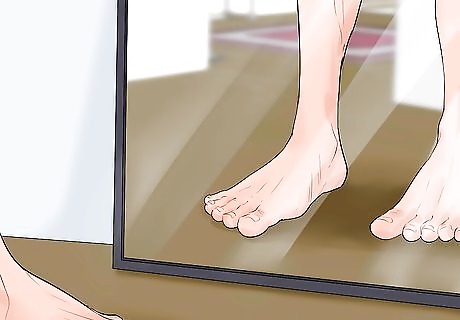
Watch your feet. Observe how you stand and walk. If your feet are automatically in a V-shape, watch the extent to which they turn out to help you figure out the extent to which you need to turn you feet inwards. Use a mirror to watch your feet. Make sure to observe your feet as you stand and as you are walking. Ask a friend or family member to watch or photograph you for further reference. Pay attention to how you walk for a few days or a week. This may help you identify problem areas or the ways in which you are exacerbating your V-shaped walk.

Walk on a treadmill. It may be easiest to help correct your walk by using a treadmill. This will allow you to gradually increase your speed as your gait straightens out. Start very slowly, at around 1.0mph to allow you to make sure you are placing your feet one in front of the other and in a straight fashion. From here, you can gradually increase your speed. If you do not have access to a treadmill, walk on a flat surface, such as a paved road or sidewalk. Ask a friend or family member to go with you and walk behind you to help make sure you are walking slowly and using a straight stride. Aim to walk every day for at least a few minutes to reinforce your gait training. This can also help strengthen your legs and feet.
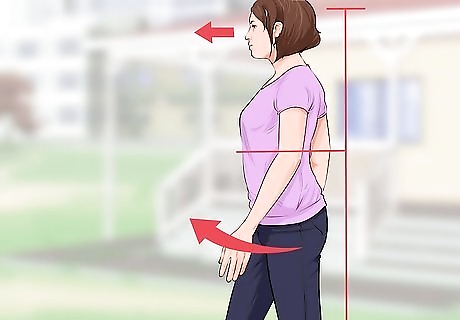
Pay attention to your walking technique. As you begin walking regularly, it’s important to pay close attention to your walking form and correct yourself as needed. This can help ensure that you don’t injure or harm yourself or exacerbate your eversion. When you are walking, make sure that you are: Holding your head high Looking straight ahead and not at the ground Keeping your chin parallel to the ground Allowing your shoulders to move naturally Maintaining a neutral, straight back that is arched neither forward nor backward Lightly engaging your abdominal muscles Swinging your arms freely Striking with your heel and then rolling it to your foot.
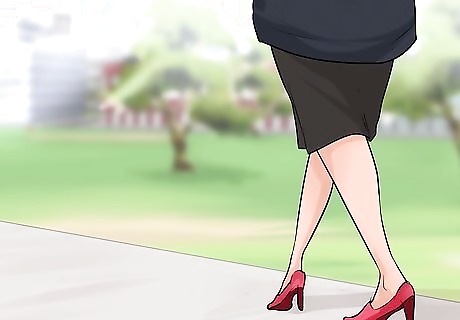
Keep working at your walk. It may feel strange or even uncomfortable at first to correct your gait. Don’t get frustrated and keep working at your gait on a regular basis. Over time, your new walking style will begin to feel more normal and natural. Give yourself positive affirmations whenever you work on your walk or notice that you are improving. For example, say “I’ve been working hard at walking straight and my muscles are sore, which means that my body is responding to my corrections.” Speak to a friend, family member, or even a counselor if you get frustrated. They may offer your positive reinforcement and encouragement to continue.
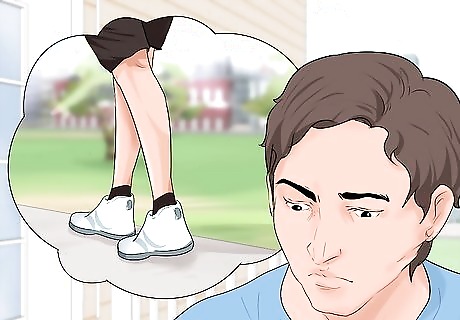
Reassess your walk. On a regular basis, it’s important to reassess your progress and your gait. This can help you decide whether to increase your speed in your training or see if you need to make other minor corrections to your gait. Look at how you are walking once a week or once every two weeks, which could give you sufficient time to begin noticing changes. Use a mirror to look at your gait and ask a friend to take a picture to help plot your progress. Increase your speed if you notice that you are walking straight. Make sure to only increase slightly, no more than 0.5mph. This can help minimize the risk of you falling back into old patterns because you’re walking too fast.

Consider wearing orthotics if you have flat feet. Some people walk with a v-shaped gait due to flat feet. This is when the soles of your feet make full contact with the floor when you stand on it. This can be a painful condition, but wearing arch supports can help. You can purchase arch supports in a drug store, grocery store, or department store. You can also see a podiatrist for custom arch supports.
Getting a Diagnosis and Treatment
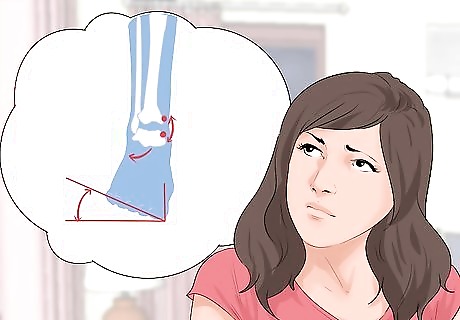
Learn the causes of eversion. Eversion is most common in younger children, though even in these cases it is still relatively uncommon. There are many different causes of eversion and learning about them may help you identify if you have a problem and get help in a timely manner. Causes of eversion include: Flat feet, or pes planus External tibial torsion, or an outward twisting of the leg bone Hip contracture, or externally rotated hips Femoral retroversion, or having a thighbone (femur) that is angled backwards.
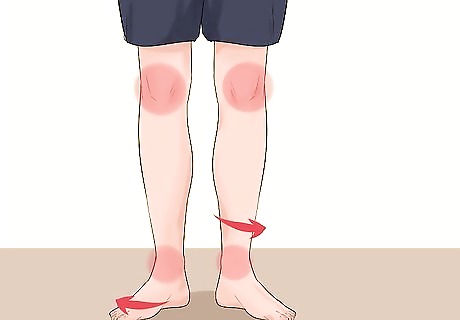
Identify out-toeing symptoms. Beyond having feet that point in a “V-shape,” people who have eversion exhibit other signs or symptoms. By identifying potential symptoms, you may be able to get a definitive diagnosis and timely treatment. Some symptoms of eversion include: Functional difficulties, including walking. Pain around the front of the knee. Hip tightness. Hip or lower back pain. Discomfort may also be present in your neck and head as your body tries to maintain a straight posture. Weakness in the knees, ankles, or hips.
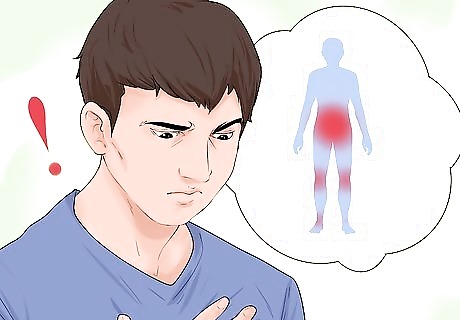
Pay attention to your body. Whenever you are walking, running, or doing other types of exercise, notice if you experience any pain or unusual sensations. This can help you identify potential problems and get help minimize the risk of developing a more serious problem. Note any symptoms you have, when they start and how severe they are. Be aware of anything that relieves your V-shaped walk or makes related pain go away.

See your doctor. If you have pronounced symptoms and/ or pain, or attempts to correct your gait don’t seem to be successful, schedule an appointment with your doctor. She can assess your walk, make a definitive diagnosis, and prescribe proper treatment for your V-shaped walk. Tell your doctor when you first noticed your walk or if you’ve always had it. Explain any pain or other symptoms you have. Allow your doctor to examine your walk or your lower body to help make an assessment of what is causing your V-shaped walk. Your doctor may also prescribe tests to better view your bones and muscles, which could also help her make a more definitive diagnosis and formulate the right treatment for you.
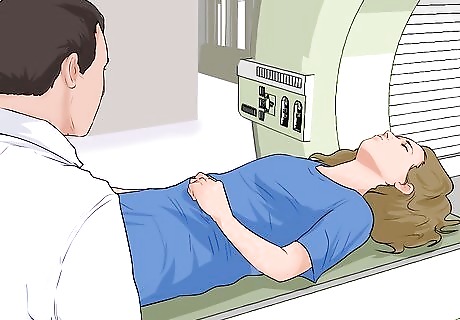
Undergo further testing. Your doctor may want to have a more in-depth look at your bones and muscles after examining your external structures. Further testing, such as an MRI, can help her more clearly assess what is causing your abnormal gait and formulate proper treatment for you. You could undergo any of the following tests: A neurological examination that tests motor skills Imaging tests such as computerized tomography (CT) scans, magnetic resonance imaging (MRI), or positron emission tomography (PET), all of which can help your doctor examine your lower body structure in greater detail.
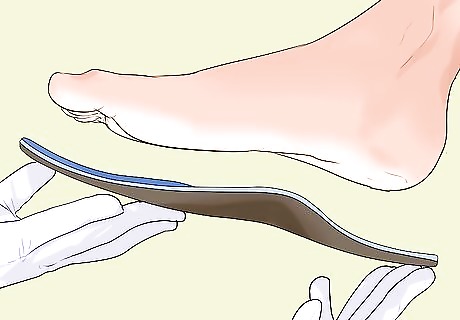
Receive treatment. Depending on your doctor’s diagnosis and the severity of your V-shaped walk, you may need treatment. Not only can this correct your walk but also relieve pain and structural problems you may have. Typical treatments for out-toeing include: Leaving the condition to heal on its own, which is a common treatment for children. Operating to rotate and correct structural abnormalities. Wearing foot orthotics or braces. Be aware that some studies show little resolution of out-toeing with shoes, braces, physical therapy or chiropractic manipulation.















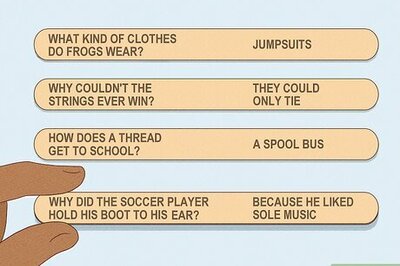
Comments
0 comment